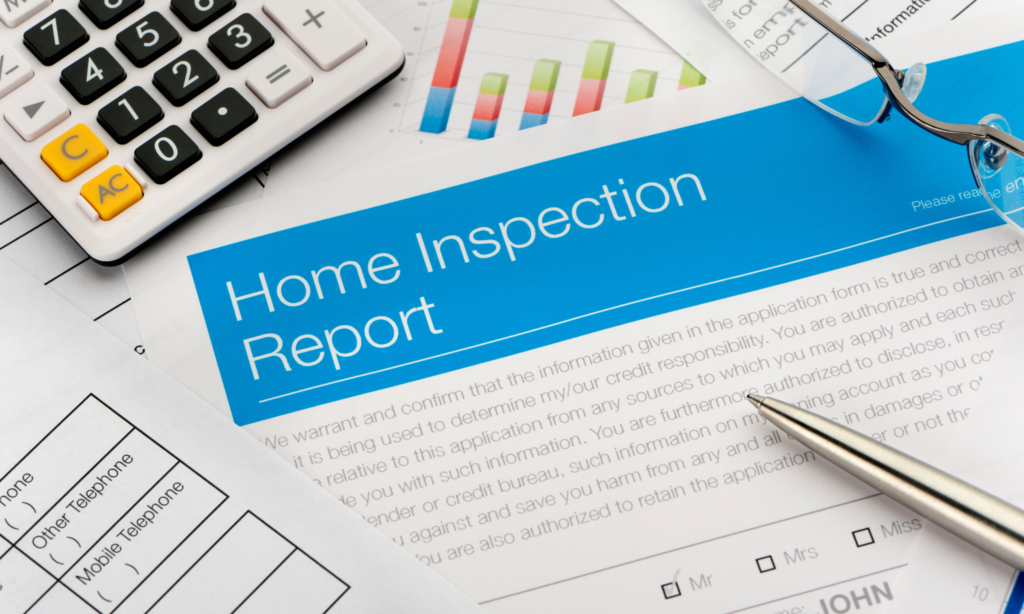When selling a home, everyone hopes the inspection report will reveal their home in its best condition. However, sometimes the inspection report highlights underlying issues that need attention. This could make the potential buyer reconsider and might even lead to the termination of the purchase contract.
To avoid such risks, home sellers need to be prepared and act promptly upon receiving an unsuccessful inspection report. Below are specific guidelines:
The first step is for the seller to thoroughly read the inspection report to understand the specific issues. requiring repair. These issues are often categorized as follows:
Roofing Issues: These can range from missing or damaged shingles to leaks or structural weaknesses that may necessitate replacing the entire roof if it’s old or extensively damaged.
Electrical Problems: Common electrical issues include improper wiring, frayed wires, or incorrectly wired electrical panels.
Plumbing System Issues: Leaking pipes (leading to water damage), malfunctioning water heaters, and drainage problems are some of the costlier issues.
Foundation Problems: Cracked foundations and water damage to basement foundations may require expensive repairs.
Termites and Pests: Damage caused by termites, as well as the presence of other harmful species, could raise concerns for the buyer.
Mold: Mold issues are common, particularly in regions with humid climates, and repairing them might take considerable time.
Window and Door Issues: Damaged window seals, improperly functioning doors, or broken glass are often discovered during inspections.
Chimney Damage: A deteriorating chimney can pose safety risks and often needs removal if not functioning properly.
Once the situation is understood, the seller needs to assess the severity of the issues and their ability to cover repair costs.
Buyer’s Course of Action: What happens after the home inspection?
Depending on the terms in your contract, the buyer may take one of three actions upon receiving your inspection report:
Repair Request: The buyer may ask the seller to complete a list of requested repairs as a condition of moving forward with the purchase.
Request for Credit: The buyer might ask for a credit, an amount sufficient to cover the repair costs. This is a common choice for buyers intending to handle repairs themselves or if the seller refuses repairs.
Withdrawal from Agreement: In the worst-case scenario, the buyer might withdraw from the agreement due to an unsatisfactory inspection.
Handling a Poor Home Inspection for Sellers
Don’t fret if you receive a negative inspection report. Reasonable buyers understand that no home is flawless. You have options and should choose based on what suits you financially and within the local real estate market. Here are some ways to handle it:
Understand the Issue: Both the buyer and seller should delve into the nature and severity of the problem and the repair costs.
The seller should contact the home inspector for more insight into the reported issues. Seeking advice from an expert can help determine severity and repair costs.
Execute Repairs: If you find the repair requests reasonable and have the means to address them, this is often the best course of action. It keeps the transaction in motion as canceling could risk potential buyer concerns if re-listed and might lead to further disclosures.
Price Reduction: As mentioned earlier, buyers often accept price reductions to manage repairs themselves. However, even if you don’t complete repairs, obtaining quotes from contractors helps avoid offering an excessively high reduction.
Sell As-Is with Price Adjustment: Selling the home as-is at a lower price might be a practical solution if you lack the ability to make repairs or if you’re in a rush to sell.
Explore Other Trades: You can always propose exchanging other items, like original furnishings not included but desired by the buyer, or appliances you don’t plan to leave behind.
What to Do If the Buyer Withdraws
Remember, if the buyer withdraws and you relist, you’ll need to disclose anything found in the report to future buyers. Therefore, the best action is to proceed with repairs and retain documentation from your contractors proving the work’s completion.
You might also consider adding the repairs made to your listing description. This informs potential buyers that your home was relisted post-contract expiration, stating reasons and ensuring all issues were resolved, which could be a smart strategy. For instance: “Seller has addressed all items from the prior inspection report, including a new roof and electrical panel.”




